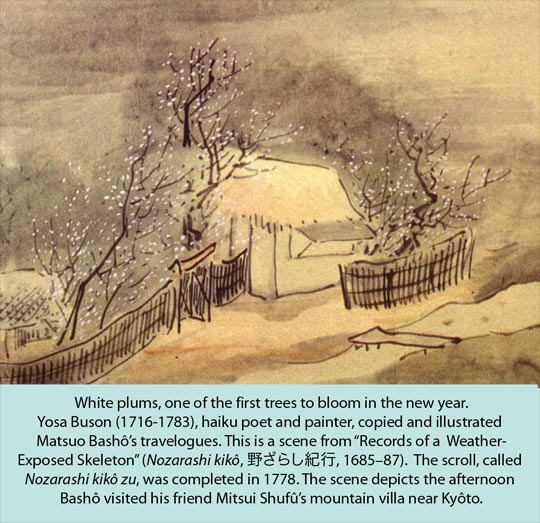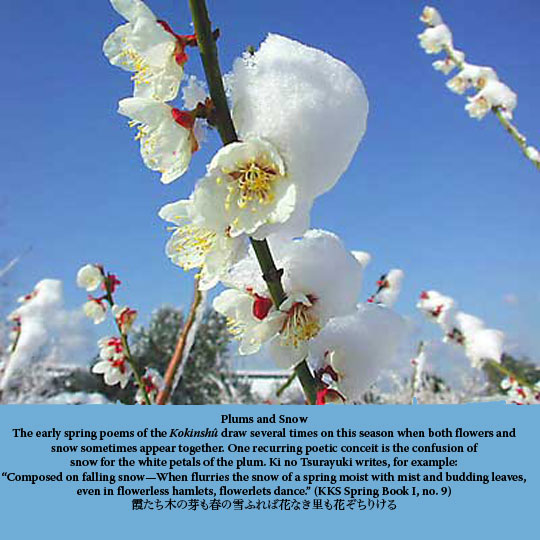Converting lunar calendar times of the year to solar calendar times:

Converting lunar calendar times of the year to solar calendar times:

Previous comments on the welcome page regarding the traditional Japanese calendar (lunar calendar, 太陰暦、たいいんれき):
 |
Current classical month:
文月 (ふづき・ふみづき・ふんづき) |
|||||
| From about the first week of August until the first week of September was the seventh month of the year, and was called variously Fuzuki/Fumizuki/Funzuki ("Letter Moon"), Akihatsuki ("Autumn Start Moon"), Tanabatazuki ("Moon of the Tanabata [Festival]"), etc. It is the first of the three months of autumn. From a literary point of view, the Tanabata Festival is its most referenced event. Taking place on the 7th day of the 7th month, it celebrated the proximation of two stars (?°牛星/Altair the Ox-Driver and ?D????/Vega the Weaver Maiden) usually divided apart by the "river" of the Milky Way. Thus, the literary reference is usually about two lovers who long for one another and who look forward to one poignant meeting in a year's time. There are various explanations for the origin of the month name "Fumizuki". Tanabata was a time when paper materials (letters, books and such) and clothing were aired out to reduce the chance of damage from insects and mildew. Fumi (letters) might refer to this. Additional comments on the lunar calendar, taiinreki. |
||||||
神無月:かみなづき・かんなづき
From about the first week of Nov. until the first week of Dec. was called the 10th Month, or Kami-na-tsuki (or Kanazuki): 神無月. It is the second of the three winter months. "Na" originally meant the modern Japanese possessive "no" so "the month of the gods." In later times, the "na" was taken to mean as written (無, "not"), thus "the godless month." There was a belief that during this period all the deities left for Izumo and thus were not to be found elsewhere.

Autumn colors at Honen Temple 法然寺 in Kyoto. Honen (1133-1212) founded the Jodo-shu 浄土宗 (Pure Land) sect of Japanese Buddhism.
Link (in Jse): http://www.hiromegu.com/kyoto/view20.htm
師走:しはす
From about the first week of Jan. until the first week of Feb. was called the 12th Month, or Shiwasu. It is the last of the three months of winter. The origins of the name are not clear. One common notion is based on the idea that at the end of the year even masters or teachers (師, shi) must hurry about; another notion is that it refers to Buddhist priests rushing to various places for sutra readings; a third notion suggests that shihatsu is constructed phonetically from the phrase toshi-hatsu-tsuki ("year-end-moon").

Miyama, Kyoto Prefecture.
Link (in Jse) to this and other winter pictures of Miyama and surrounding area: http://homepage2.nifty.com/atelier_hide/garelie/02miyama/index.html
 |
|||||||
|
Current classical month:
睦月 むつき |
|||||||
| From about the first week of February until the first week of March was the first month of the new year, and was called variously Mutsuki ("Dear Moon," "Kind Moon" "Adorable Moon," - mutsu is a prefix showing endearment or closeness), Hatsutsuki ("Initial Moon"), Shogatsu ("Proper Moon"), etc. It is the first of the three months of spring, and a month of numerous important annual events. Additional comments on the lunar calendar, taiinreki. | |||||||
|
For a full version of the detail above, click here.
|
|||||||
 |
|||
|
Current traditional month:
如月 きさらぎ・じょげつ |
|||
| From about the first week of March until the first week of April was the second month of the new year, and was called variously Kisaragi (also pronounced Jogetsu). According to Kakokawa's classical dictionary the term means either "return of life" (生・更ぎ) because of new spring growth or "to add a layer of kimono" (着・更ぎ) due to the continued cold weather. Other names include Konometsuki ("Month of Budding Leaves"), Mumetsuki ("Plum Month"), Yukikietsuki ("Month of Melting Snow"), etc. It is the second of the three months of spring. Additional comments on the lunar calendar, taiinreki. | |||
|
Current lunar calendar month:
弥生 やよひ |
|||||
 |
|||||
| From about the first week of April until the first week of May is the third month of the lunar year, the calendar used by the Japanese until modern times and still important to poetry composition and such.
This month is the third of the three months of spring. Yayoi is an abbreviation of "iya-oi" meaning "to sprout more and more." Other names include Hanami-tsuki ("Blossom-viewing month"), Sakura-zuki ("Cherry blossom month"), Kagetsu ("Month of joy"), etc. It is during this month that the much admired and fetted cherry blossoms come into bloom. |
|||||